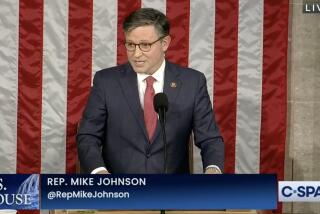Law Leaves Many Workers Unprotected : Congress Takes a New Look at Pensions
- Share via
WASHINGTON — About 76 million working Americans expect that, when they retire, they will collect income from the private pension plans to which they now belong. But will there be enough money in the pension funds?
Most will collect their money, but some may not. Nobody knows how many, not even the government, which is supposed to supervise large pension plans.
Until 15 years ago, only 3% of workers enrolled in pension plans ever received benefits. Then a federal law, usually called the Employee Retirement Income Security Act of 1974, was passed to remedy that situation. It was supposed to require federal supervision of the majority of private pensions.
But there are questions as to how well the law is working, and Congress is investigating the issue. No one wants to risk returning to the days when few pension promises were kept.
Law Protects 40 Million
Today, 40 million workers--slightly more than half of all members of private pension plans--will get their retirement money one way or another. The federal government guarantees that through its Pension Guaranty Benefit Corp. If the plans do not have enough money, the government will step in to keep retirement payments coming.
The government does not guarantee the plans of nearly 36 million other workers. These include the plans of firms with fewer than 26 employees, church organizations and professionals such as law firms and medical groups. If these pension plans lack the resources to meet their obligations, payments to their retirees will be reduced or stopped.
Pension experts generally believe that most private pension plans are financially sound, well administered and will be able to make all the retirement payments promised to current and future retirees.
But some pension plans are questionably administered and on shoddy financial footing. Others are looted by the people who are supposed to administer them, according to the inspector general of the Department of Labor and individuals’ complaints to the Pension Rights Center, a private agency.
Missing Assets
No one knows how many plans are endangered by dubious practices, but two years ago, the inspector general examined a number of pension funds and discovered that 0.3% of their assets was missing. If that figure represented an average for all private plans, the total would be “$4 billion in misused assets,” Rep. Tom Lantos (D-San Mateo) said. Lantos is chairman of the House Subcommittee on Employment and Housing, which has just opened hearings on the issue.
The subcommittee is trying to figure out how to tighten the supervision of pension plans, to make sure that their administrators obey federal law and have enough money to meet their obligations.
Raymond Maria, acting inspector general of the Labor Department, said there are two fundamental problems with the department’s system of overseeing the large pension plans. One is that the annual audits by independent accountants, required by the law, too often fail to turn up problems with the administration of a pension plan. Maria recommended that auditors conduct more thorough investigations and be required to report any irregularities to both the Labor Department and to workers covered by the plans.
Few Criminal Cases
The second problem, he said, is that the Labor Department has been reluctant to bring criminal charges. He calls this an “institutional resistance to pursue criminal sanctions.” Maria wants Congress to pass a law that would require the Labor Department to return to the inspector general’s office the freedom to pursue criminal investigations of nonunion pension and welfare plans.
More to Read
Get the L.A. Times Politics newsletter
Deeply reported insights into legislation, politics and policy from Sacramento, Washington and beyond. In your inbox twice per week.
You may occasionally receive promotional content from the Los Angeles Times.










